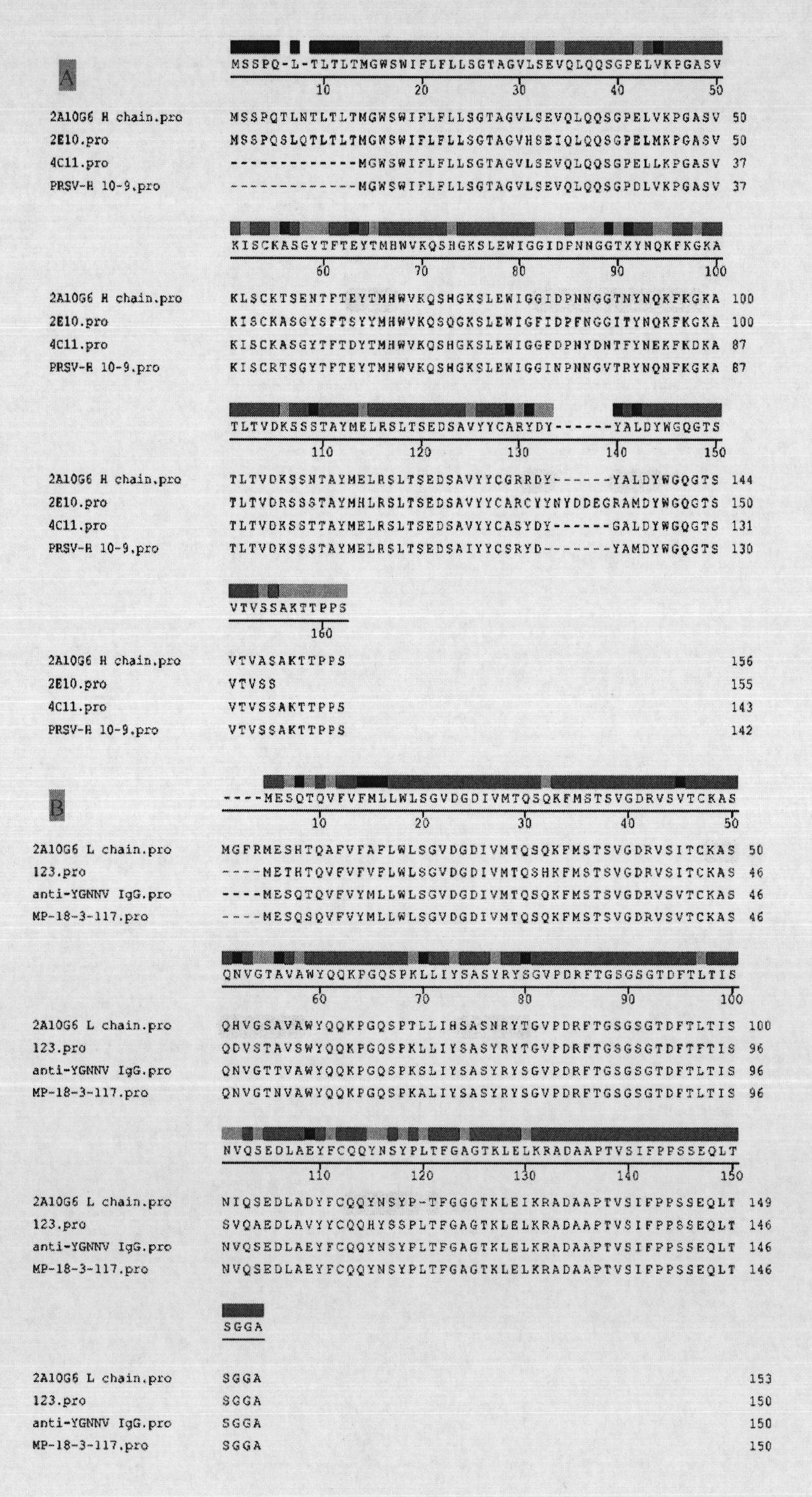Anti-flavivirus envelope E protein monoclonal antibody and application thereof
A monoclonal antibody, flavivirus technology, applied in antiviral immunoglobulins, antiviral agents, applications, etc., can solve the problems of exacerbation of flavivirus disease, negative effects, inappropriate antibodies, etc., to achieve good broad-spectrum anti-yellow virus effect of virus
- Summary
- Abstract
- Description
- Claims
- Application Information
AI Technical Summary
Problems solved by technology
Method used
Image
Examples
Embodiment 1
[0078] Example 1. Preparation of dengue type 2 virus antigen
[0079] The 43 strains of dengue type 2 virus (GeneBank No. AF204178) preserved in this laboratory were used as a cell maintenance solution (containing 2% (volume percentage) calf serum, RPMI-1640 medium of 100 U / mL penicillin and streptomycin, pH 7 .0~7.6) After 5-fold or 10-fold dilution, 1-3 day-old Kunming or Balb / C suckling mice were inoculated into the brain, each inoculated with 0.02 mL. Those that died within 24 hours after inoculation were regarded as non-specific death. Then observe the sickness of the suckling mice every day, and the symptoms are encephalitis symptoms such as not feeding, lethargy, convulsions or numbness of the limbs, and bowed back. During the period of 5-9 days after virus inoculation, if there are infected suckling mice, they will be killed by pulling their necks when they are in a dying state, and the brains will be dissected under sterile conditions. Each brain weighs about 0.2g....
Embodiment 2
[0080] Example 2. Screening and preparation of monoclonal antibodies
[0081] 10% suckling mouse brain suspension was emulsified with an equal volume of Freund's complete adjuvant (Sigma company product) or Freund's incomplete adjuvant (Sigma company product) to obtain Freund's complete adjuvant antigen and Freund's incomplete adjuvant Antigens were used as antigens to immunize 9-week-old female healthy BALB / C mice. Through intraperitoneal, intramuscular and subcutaneous multi-point injection, immunization was boosted with the same dose of Freund's incomplete adjuvant antigen at intervals of 3-4 weeks. A total of 3 times of immunization, select mice with higher anti-dengue type 2 virus antibody titers in the serum, and inject the brain suspension of suckling mice infected with dengue type 2 virus through the intraperitoneal route, and take the spleen lymphocytes of the immunized mice 3 days later, Using the classic PEG method, the mouse spleen lymphocytes were fused with SP...
Embodiment 3
[0083] Example 3. Determination of D2-2A10G6 antibody subtype
[0084] The subtype and light chain of the D2-2A10G6 antibody were determined according to the steps in the operation manual of the IsoStrip Mouse Monoclonal Antibody Isotyping Kit (product of Roche). The results showed that the D2-2A10G6 antibody belonged to IgG1 ( figure 1 In A), the light chain is κ chain ( figure 1 Medium B).
PUM
 Login to View More
Login to View More Abstract
Description
Claims
Application Information
 Login to View More
Login to View More - R&D
- Intellectual Property
- Life Sciences
- Materials
- Tech Scout
- Unparalleled Data Quality
- Higher Quality Content
- 60% Fewer Hallucinations
Browse by: Latest US Patents, China's latest patents, Technical Efficacy Thesaurus, Application Domain, Technology Topic, Popular Technical Reports.
© 2025 PatSnap. All rights reserved.Legal|Privacy policy|Modern Slavery Act Transparency Statement|Sitemap|About US| Contact US: help@patsnap.com



